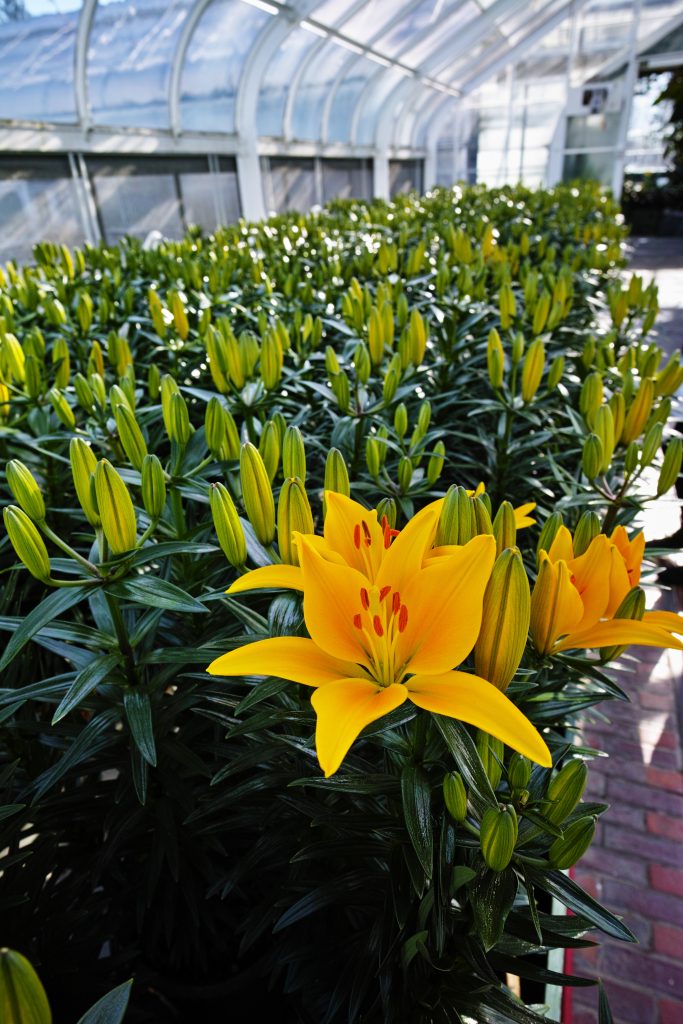
Features
Flowers
Inputs
PGRs
Avoiding overapplication of PGRs
How to avoid it, and what to do if it happens.
April 21, 2020 By Jim Kruger
 Source: Getty Images
Source: Getty Images It is any professional grower’s worst nightmare. Unfortunately, many have experienced that moment of recognizing plants which have suffered from a plant growth regulator (PGR) overapplication. Maybe it happens because label instructions are misunderstood, or because of a miscommunication within the production team. Perhaps an inexperienced applicator miscalculates the application. Even an experienced applicator can mix up the concentration calculation.
When overapplication happens, sometimes the signs are immediately obvious. Other times, they may take a while to appear. If you’re lucky, the applicator realizes right away, and you can address it as soon as possible.
Catastrophic could be the word used to describe these situations. Expensive delays waiting for stalled plants to recover. Plants that keep growing but won’t flower. Phytotoxicity, which may appear as necrotic spots, yellowing or discolouration. Leaves that crinkle or are darker green than normal. Severely stunted growth. Leaf distortion. Missed windows for sales. And in the absolute worst case scenario, having to discard an entire crop and take a hard hit to the bottom line.
Preventing overapplication
To avoid a PGR overapplication, always start by reading and following label directions. Encourage growers and applicators to take extra time for calculations. PGR rates vary by cultivar and by plant type, so it is extremely important to refer to any recommendations that the plant breeder or supplier provides as well.
Equipment can also make a difference. Always calibrate before application. Perform regular maintenance on nozzles, hoses and other parts to ensure they’re operating at peak level. And be sure to fully flush each unit before switching to another product.
Carefully consider how many people you have involved in your application strategy. Miscommunication is one of the most common causes of PGR overapplication – one applicator doesn’t realize that another has already done the application, for example. It’s best if you can limit both the number of people who apply and the number of decisionmakers on application timing.
Just because it’s been done a hundred times doesn’t mean number one-hundred-and-one will be fine. Complacency kills calculations very quickly. Practise application techniques, as well as how to calculate. An easy way to practise is by using water to apply in an area without crops.
Check the math, then recheck it. Be sure volume and rate calculations are correct. Refer back to notes from previous applications. Tools like the free PGR Mix Master calculator, developed by Dr. Brian Krug, greenhouse floriculture specialist at University of New Hampshire Cooperative Extension in partnership with Fine Americas, can be invaluable in avoiding overapplication. The calculator provides an easy way to calculate the right rate for sprays and drenches with some of the most common PGRs. Simply choose the PGR you’re using, click metric measurement, select the final solution amount and PGR concentration, then click Calculate. It is accessible at e-gro.org/mixmaster.
Future Solutions
Even the most experienced growers can have a misstep. Ongoing research has revealed a way to rescue crops with Fresco, a known PGR. This rescue application is being successfully used in the States. Currently, Fresco is labelled in Canada for use on lilies (Easter, asiflorum hybrids, Asiatic and oriental) to prevent yellowing and senescence of lower leaves and to delay flower senescence. Work is ongoing to expand the uses for Fresco in Canada.
Fresco is a combination PGR with two active ingredients: BA (benzyladenine) and GA (gibberellic acid). It contains 1.8% GA 4+7, which enhances internodal elongation, and 1.8% 6-BA, which stimulates lateral or axillary shoot growth. These active ingredients let Fresco stimulate growth in two very different but very complementary ways.
Gibberellins help plants stretch or grow taller by encouraging cells to elongate. Likewise, cytokinins are phytohormones that stimulate cells, but they’re encouraging them to divide, thus increasing branching and plant growth. Combined, the two plant hormone groups encourage controlled, structured, uniform growth to produce plants that are fuller and more marketable. This dual action, researchers discovered as they were refining Fresco’s use as a drench, wakes the plant’s pathways such that they help plants recover from overapplication or a stall with very controlled growth.
The bottom line is that overapplication will be something many growers face in their careers. The answer to prevention lies in vigilance for communication, maintenance and calculation.
Jim Kruger is regional sales manager, eastern Canada, for Fine Americas.
Print this page